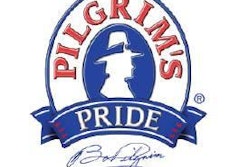
At times, 2008 was like living in a bad dream. Corn future prices rose as high as $8 per bushel in the summer, but cash corn prices fell below $3 in the Midwest by early December. The credit crunch swept away some financial companies that were household names, and it sped the slide of the nation's largest broiler company to Chapter 11. Last year was a year that many in the poultry industry would like to forget. Will the wild ride continue in 2009? When will poultry firms get back in the black?
Profits by third quarter
The U.S. broiler industry has responded to high feed costs and relatively low chicken meat prices by making significant cutbacks in chick placements, according to Stacey Edwards, manager, feed center of excellence, Agri Stats Inc. Slaughter volume is expected to be down 4%, 3% and 3% in the first, second and third quarters, respectively, in 2009 versus the same periods the prior year, before increasing by 2% in the fourth quarter.
Edwards presented these Express Markets Inc. estimates at USPOULTRY's Grain Forecast and Economic Outlook. She said that industry losses are expected to bottom out in the third quarter of 2008, and that profitability should return by the middle of 2009.
Current losses are the result of increases in energy, feed and freight costs, as well as ample meat supplies and poor overall economic conditions.
The industry is taking steps to reduce the supply of chicken meat, and this will improve poultry meat prices, according to Edwards. She said, "The production cuts are real, but are they deep enough to restore profitability?"
One factor that has hindered the industry's efforts to reduce production levels has been good live bird performance. Edwards said that the industry had reduced the number of breeder hens in lay by around 1 million head, beginning May. This has been accomplished by marketing breeders two weeks earlier than normal. This has reduced the number of eggs set, but hatchability has improved. Mild summer weather also helped improve live performance relative to prior summers.
Recession is here
"This will be a modestly severe recession, not a mild one," said Dr. Donald Ratajczak, regent's professor of economics emeritus, Georgia State University. He forecasts that total job losses in the U.S. will be around 2.5 million before the recession bottoms out. The credit crisis of last fall has had an additional negative impact on both real estate and auto sales, and this will deepen the recession, according to Ratajczak.
Bigger soybean crops expected
Edward Ebert, director of research, Bunge Limited, predicts that there will still be tight stocks to use ratio for soybean meal in the U.S. at the end of the 2009 crop year. This is in spite of the increased acreage that is expected to be planted in soybeans in both the USA and South America. He said that Bunge expects to see a flattening or slight decrease in demand for soybean meal, and that most of the decrease will come from Europe. Ebert said that high nitrogen fertilizer prices this spring might shift some more acreage away from corn to soybeans.
Nationalized ethanol industry?
The possibility of a nationalized ethanol industry increased this summer, when corn prices reached $8 a bushel and some ethanol producers closed their plants, according to Rob Fisher, a feed grain analyst with International Agribusiness Group LLC. Fisher said that a nationalized ethanol industry might operate to convert corn into ethanol when corn prices are low but curtail operations when corn prices reach high levels. In the future, he sees the ethanol industry providing a floor price for corn but exiting the corn market when prices reach high levels. Brazil uses its ethanol industry in a similar way to keep sugar prices up.
Prior to last summer's run-up in corn prices, it was assumed that the demand for corn to produce ethanol would be inelastic, meaning it would not respond to changes in the price of corn.
However, when corn prices reached $8 per bushel this summer, demand was found to be elastic, with some ethanol producers closing plants.
Corn prices will continue to be closely tied to crude oil prices, Fisher said. Indicating that $80 a barrel may become oil's new balance point, he said this oil price translates to corn prices of around $4 a bushel.
Fisher has forecast that the number of acres planted in corn in the U.S. will drop below 2008 levels in 2009. However, he expects acreage planted in soybeans in 2009 to increase. Wheat harvests worldwide are strong enough this year, he said, to support the use of wheat in poultry rations in the U.S.
Favorable weather forecast for major grain crops
It may be a little cooler and wetter than normal this winter and early spring in the Plains states and Midwest Corn Belt, according to Drew Lerner, president of World Weather Inc., but good growing conditions in the U.S. Midwest in 2009 are what he predicted.
A number of factors influenced Lerner's forecast for this winter and for the 2009 growing season.
Lerner combined the effects of the sun spot cycle, a possible La Nina in the Pacific, the Arctic oscillation, the Pacific decadal oscillation and other long-term cycles. Putting all of these effects together, Lerner said that he does not expect drought conditions to negatively impact the major grain crops in the U.S. in 2009.
The colder weather and early spring may give natural gas prices a boost this winter, according to Lerner.
Ingredient substitution
The run-up in grain and other feed ingredient costs has succeeded in stimulating some changes in how rations are formulated in the USA.
Edwards said that the cost of 18% phosphorous has increased from around $350 per metric ton early in 2008 to almost $1,000 per metric ton this fall.
Partially as a result of this price increase, 87% of the U.S. broiler industry now uses some type of phytase product in its feeds.
Another change has come in the use of distillers dried grains with solubles (DDGS) in poultry feeds.
Edwards said that the average broiler feed now has 5.5% DDGS in it, but that some complexes located near ethanol facilities have already begun using inclusion rates as high as 15%.
At present, the average inclusion rate for DDGS in turkey and table egg layer feeds stands at 5.6% and 8.5%, respectively.
U.S. DDGS production has increased from around 5 million metric tons in 2001 to nearly 30 million metric tons in 2008. Edwards projected that DDGS output would be touching 40 million metric tons in 2010. Because of this increase, Edwards believes that inclusion rates of DDGS in the U.S. poultry rations will increase further.


















